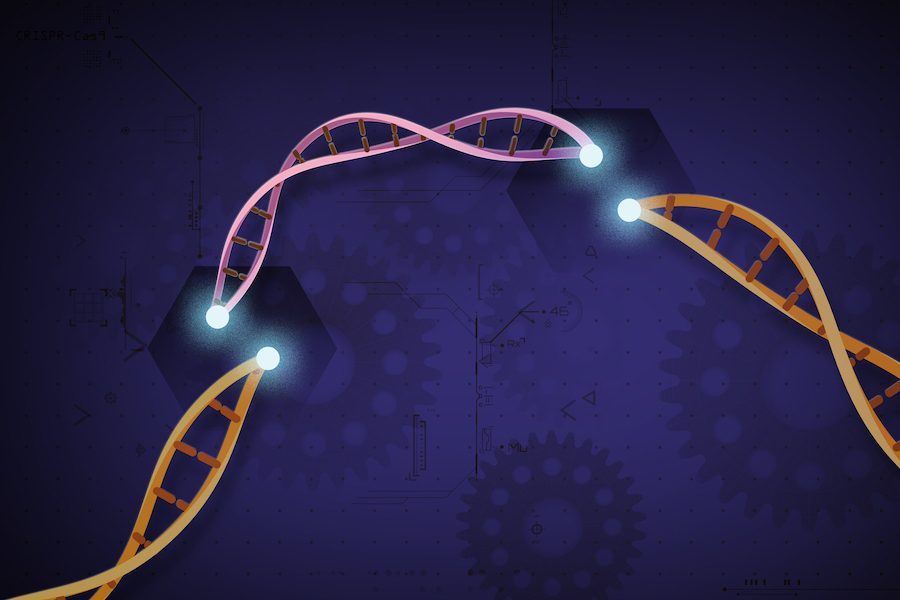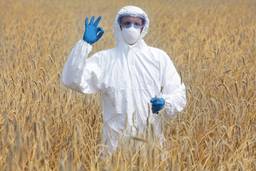This is Why Gene Editing of Plants and Animals Needs to be Regulated
Jonathan R. Latham

Gene editing of DNA inside living cells has many potential uses — from treating human disease to altering crops and livestock for agriculture — and is often considered the preeminent technological breakthrough of the new millennium. For example, in a move that has been widely criticized, Chinese researcher He Jiankui claims to have edited human babies to resist HIV by altering a gene called CCR5.
For most commercial applications gene editing’s appeal is simplicity and precision: It alters genomes at precise sites, without inserting foreign DNA. This is why, in popular articles, gene editing is often referred to as “tweaking.”
The tweaking narrative, however, is an assumption and not an established fact. And it recently suffered a large dent.
In late July researchers from the US Food and Drug Administration (FDA) analyzed the whole genomes of two calves originally born in 2016. The calves were edited by the biotech startup Recombinetics and had become biotech celebrities for having a genetic change that removed their horns. Cattle without horns are known as “polled.” The calves are well-known because Recombinetics has insisted that its two edited animals were altered with extreme precision to possess only the polled trait.
However, what the FDA researchers found was not precision. Each of Recombinetics’ calves possessed two antibiotic resistance genes, along with other segments of superfluous bacterial DNA. Thus, apparently unbeknownst to Recombinetics, adjacent to its edited site were 4,000 base pairs of DNA that were unintentionally introduced alongside the DNA required for the hornless trait.
The FDA finding has attracted some media attention, most of it focused on the incompetence of Recombinetics. The startup failed to find (or perhaps look for) this DNA, which it had itself added as part of the editing process. Following the FDA findings, Brazil terminated a breeding program begun with the Recombinetics animals.
The FDA’s findings in this case, however, pale in comparison to another recent discovery about gene editing: that foreign DNA from surprising sources can routinely find its way into the genome of edited animals.
These findings have not been reported in the scientific or popular media. But they are of great consequence from a biosafety perspective: They show the need for strong regulatory oversight of the gene-editing industry.
Implications of superfluous DNA in edited cells
In short, the new findings are very simple: Cutting DNA inside cells, regardless of the precise type of gene editing, predisposes genomes to acquire unwanted DNA. Therefore, it is not hard to imagine, for instance, gene-edited animals becoming the breeding stock that leads to the development or spread of novel or unwelcome viruses or mycoplasmas. This is because they make take up DNA from other species that contaminates the editing reagents.
Stuart Newman of New York Medical College is a cell biologist, a founding member of the Council for Responsible Genetics, and Editor-In-Chief of the journal Biological Theory.
“I have little doubt E. coli DNA has been inadvertently incorporated into many CRISPR targets,” Newman said, referring to a method of gene editing. “And it is likely to cause problems, as it has in the horned cattle.”
Similar worries apply to human applications. Concern over the incorporation of DNA from other species has not been raised publicly in connection with the gene-edited human babies of researcher He Jiankui, but, clearly, it should be.
The second important conclusion, and what the Recombinetics case exemplifies, is that researchers are often not looking for stray DNA. If they were to look, many more examples would likely be reported. We can conclude this because the research cited above used standard methods of gene editing. The only atypical aspect was the extra effort put towards detecting superfluous DNA.
Gene Editing versus GMOs
What these recent findings also highlight is a more general, but little-discussed, aspect of gene editing. Although the goals of gene-editors and genetic engineers are assumed to be very different, their standard methods are, in practice, virtually indistinguishable.
Consider crop plants, the subject of much of the current commercial interest in gene-editing. To edit crops, DNA is introduced into plant cells using what are standard genetic engineering methods. These methods can all create mutations. That is, they damage DNA. Depending on the specifics of the method used, the collective result can be ten thousand mutations per genome. For gene editing of crops this means that one on-target ‘tweak’ may be dwarfed by thousands of off-target ones.
The other necessary comparison with Genetically Modified Organisms (GMOs) is their track record of being found, long after commercialization, to have unintended foreign DNA, or transgenes, present in their genomes. Cornell’s virus-resistant papaya, released in Hawai’i, turned out to contain at least five (and possibly six) separate fragments of foreign DNA. Cornell had previously told regulators its papaya contained only two transgenes. Another example: Monsanto’s Roundup Ready Soybean, by then grown on 96% of U.S. soybean acres, was found by independent researchers to have substantially more foreign DNA than Monsanto had claimed.
So, if one only listened to the rhetoric contrasting “precise” “tweaks” of gene editing with “messy,” “random” genetic engineering one would hardly suspect that, when it comes to plants, and often to animals as well, there is little difference between the reality of gene editing and that of genetic engineering.
Are there solutions?
The cases mentioned above demonstrate that the gene-editing industry, and not just Recombinetics, is not showing much interest in self-examination. Far greater even than the GMO industry before it, there is a cowboy zeitgeist: Blow off problems and rush to market. Thus most gene-editing companies are reluctant to share information and consequently very little is known about how, in practice, many of these companies derive their ‘gene-edited’ products.
Many countries are at present formulating regulations for gene editing. These will go a long way to determining who benefits and who loses from any potential benefits that gene editing may have. In any event, these results provide a compelling case for active government oversight.
But it is not just regulators who need to step up, however. Investors, insurers, journalists, everyone, in fact, should be asking far more questions of the scientists and companies active in gene editing. Otherwise, boon is likely to stray into bane.
Editor’s Note: This is a revised version of an article originally published by Independent Science News. To read the original version, which dives deeper into the science of gene editing and contains a bibliography of reference materials, click here.








